What is Concrete Anchor?
An anchor is a piece of steel used to transfer loads to concrete. They can be cast into the concrete or put into a piece of hardened concrete later. There are several kinds of cast-in anchors, but headed bolts, hooked bolts (J- or L-bolts), and headed studs are the most common. The expansion anchor, the undercut anchor, and the sticky anchor are the three anchors used after the fact.
In adhesive anchors, steel parts like threaded rods and reinforcing bars that have been bent or internally threaded steel sleeves with bends on the outside are used. Anchor systems often join two structural parts or attach a non-structural part to a building.
The Function of Concrete Anchors:
Concrete anchors can attach any material, including other metal, wood, plastic, and even additional concrete. Light-duty concrete anchors are suitable for hanging towel bars, doors, and other items weighing up to 50 lb (22.7 kg) from a concrete wall. Concrete anchor bolts, particularly the types most commonly connected with concrete anchors, might be a great solution for a more solid and sturdy concrete construction.
In general, concrete is a great choice for any foundation. It’s dense, less expensive, more long-lasting, and weatherproof. Concrete anchors can hold up to 200 pounds (90.7 kg). Such an anchor is used to suspend a television or other large object. Construction and building necessitate the production of heavy-duty concrete anchors. Use these confidently; they can hold more than 200 pounds each (90.7 kg). The base can be used to attach nearly anything else in the case of a flood or heavy storm, a house built on top of concrete without sufficient anchoring risks being swept away.
Installation of Concrete Anchors:
You will need a few tools before you can install your anchors:
- A mallet
- A concrete anchor
- A hammer drill with a correctly sized masonry bit
- Open-end wrench
- Vacuum, compressed air, or brush to clean the hole
- Setting tool (for drop-in anchors)
The following are some steps for installing concrete anchors:
- The length and diameter of the bolt should be verified before proceeding. An indicator on your concrete anchor will often tell you the width of your drill bit.
- You need to locate the proper masonry bit, measure the length of the anchor, and then write that number on the bit. Drilling straight through the concrete is easier if you mark your bit first. Then, install the bit into your hammer drill.
- The first step in drilling into concrete is to clean the surface. Drilling the hole 1.3 to 2.5 cm deeper is recommended than the full length of the anchor.
- If you’re finished drilling, remove the bit and give it a quick once-over with a brush, a can of compressed air, or a vacuum. Removing as much rubbish from the hole as possible is crucial, as this can cause your anchor to become unsteady.
- If the hole is clear of debris, you may now lower the anchor. All sleeve anchors—from drop-ins to lag shields to sleeve anchors—require the creation of holes. Please make sure the anchor or sleeve is securely inserted into the hole by hammering on it with a mallet after you’ve dropped it in. Try drawing it out of the hole to see if the anchor comes loose.
- Ignore this if you’re not using a drop-in anchor. Insert the setting tool into the drop-in anchor’s threaded sleeve and tap it with a mallet to release the pin. As you hammer, a high, ringing tone should gradually give way to a lower, steadier one.
- Put the nut, bolt, or screw into the concrete anchor and tighten it until it is snug. You’ll see how well it holds if you give the anchor a pull. If the installation was done correctly, you shouldn’t need to make any adjustments.
- Anchors can be used to secure a wide variety of objects to the concrete once they have been set.
Different Types of Concrete Anchors:
1. Wedge Concrete Anchors:
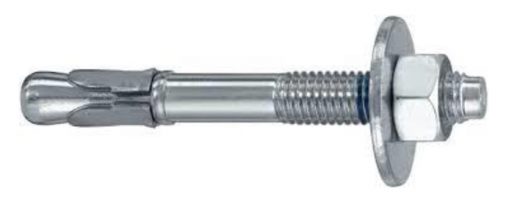
Fig 1: Wedge Concrete Anchors
Courtesy: hilti.in
The base of wedge concrete anchors is a flexible wedge that may be opened up to 1/16 of an inch. Wedge concrete anchors are commonly used because they are simple to install, last a long time, and don’t rust. It is a stud made from two parts that have been bonded together. This component threads the stud at the top and extends the stud and concrete hole wall through a wedge and clip at the base. You should use wedge concrete anchors if the shear and load are substantial. It is common practice to employ seismic wedge anchors, which are significantly more robust, in regions prone to earthquakes.
For wedge anchors to work properly, the holes drilled into the concrete should be the same diameter as the anchors. Only solid concrete is intended by the phrase “concrete,” which does not refer to other materials such as stone, mortar, brick, etc.
2. Stud Concrete Anchors:
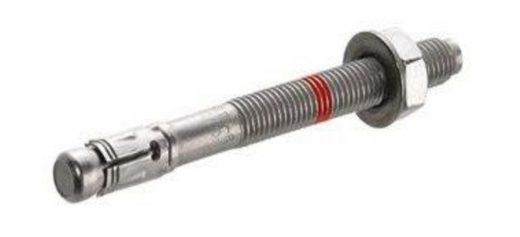
Fig 2: Stud Concrete Anchors
Courtesy: civiconcept.com
People often use draw nuts made of concrete sleeves or wedge anchors to get a long anchor extension into the holes or the wall. The length of the stud anchor is also increased. The stud anchor’s top needs to be pounded to extend it. The expansion anchor has a vertical slot at the bottom and a screw hole at the top.
A hole in the bottom of the conical steel plug holds the anchor rod in place. If you knock the top of the stud with a hammer, it will fall onto the tapered steel and stay there. In turn, this causes the pin to swell to match the circumference of the enlarged hole.
3. Concrete Sleeve Anchors:
Concrete sleeve anchors, also known as male fasteners, are made up of a threaded bolt, an expander sleeve, a washer, and a nut. After a hole is drilled in the concrete, stone, brick, or mortar, the Sleeve anchors can be threaded through the fixture and set. When you tighten the nut, the bolt pulls up the sleeve, and the sleeve expands by as much as 1/8″.
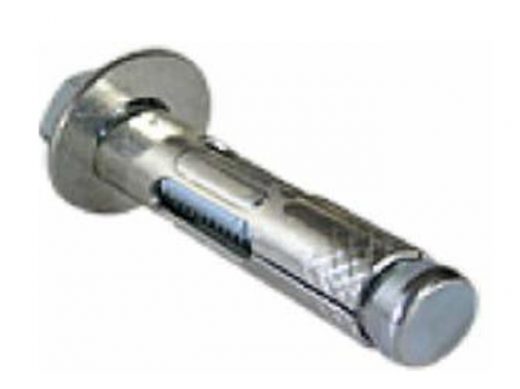
Fig 3: Concrete Sleeve Anchors
Courtesy: melfast.com
4. Split Drive Concrete Anchors:
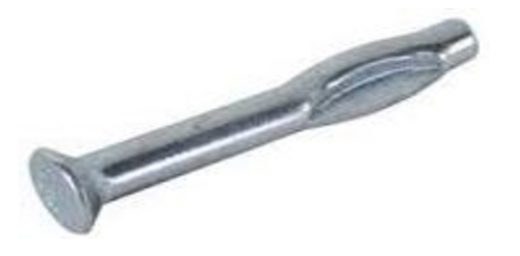
Fig 4: Split Drive Concrete Anchors
Courtesy: allfastener.com
A split drive anchor is a single-piece fastener that splits at the bottom and pushes against the sides of the hole when it is driven into the ground. The fixture is pressed into the concrete with the tool’s force. For the best grip, the diameter of the hole drilled for a split drive anchor must be the same as the diameter of the anchor’s base. Split-drive concrete anchors are great for light-duty uses and can be used with concrete, block, and brick.
5. Lag Shield Concrete Anchors:
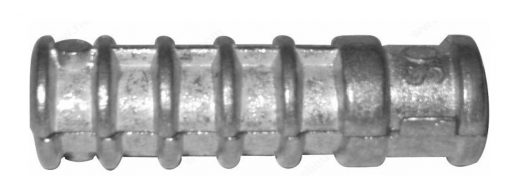
Fig 5: Lag Shield Concrete Anchors
Courtesy: misdirect.com
Lag concrete anchors have threads on the inside, and the outside is tapered and has ribs. Zinc alloy is a simple material used to make anchor sleeves for concrete racks. These bushings go on drilled floors made of mortar, concrete, brick, stone, etc.
This screw goes into the zinc sleeve and makes it bigger. It also cuts the threaded part of the anchor. It is a piece of lag concrete pressed into the main materials outside wall. The diameter of the bolt that will fit inside the screw determines how long the built-in part lag concrete anchor is. In general, longer lag anchors hold the base material better and are stronger than shorter ones.
6. Drop-In Concrete Anchor:
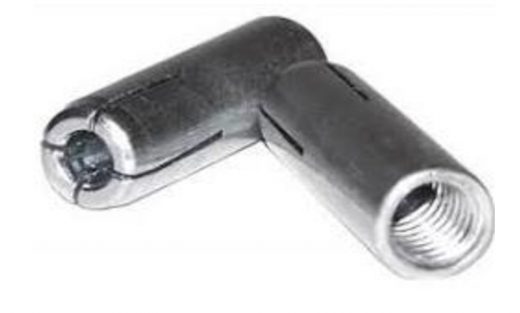
Fig 6: Drop-In Concrete Anchors
Courtesy: allpointsfasteners.com
Drop-in anchors are female anchors inserted into a drilled hole and are often mistaken for wedge anchors due to their comparable expansion. A setting tool, effectively a steel rod with one end necked down, is used to secure the expander plug at the anchor’s base. The drop-in anchor is inserted into the tool’s necked-down section, and the two parts are tapped together until the anchor’s lips engage. Like the wedge anchor, the drop-in anchor is designed solely in cand and is ineffective in other building materials.
7. Machine Screw Anchors:
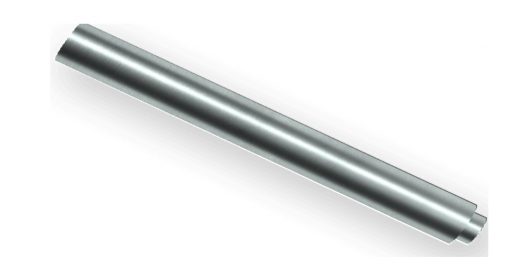
Fig 7: Machine Screw Anchors
Courtesy: toggler.com
Machine screw anchors are female fasteners with cylindrical bases driven into masonry materials like brick, mortar, stone, and concrete. By rotating the installation tool, you can thread the anchor screw through the hole in the base of the fixed device.
If the problem is with the screw, the anchor’s base will expand and get anchored to the concrete. There is a unique set tool for each screw anchor in the machine, and that tool is based on the screw anchor’s diameter. The lips of the anchor installation tool should line up with the lips of the armature for proper installation. But most crucially, the hole size for machine screw anchors must be bigger than the anchor itself.
8. Self-Drilling Concrete Anchors:
An anchor cutting holes in the concrete slab could be called a self-drilling concrete anchor. The anchor’s upper end is fitted with internal threading and a tapered steel stopper to screw in that bolt. The bottom end of the shell expands while carrying the walls or sides of the hole when you drill the shell onto the tapered steel plug with a hammer.
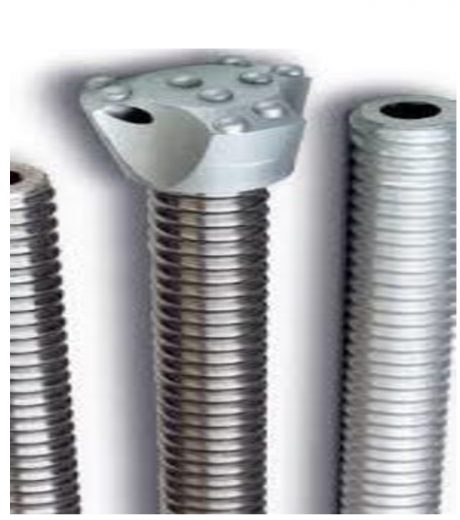
Fig 8: Self-Drilling Concrete Anchors
Courtesy: panchvaktram.in
9. Strike Anchors Bolts:
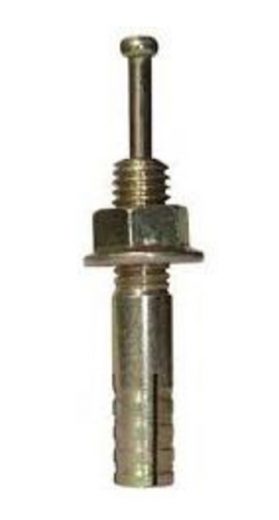
Fig 8: Strike Anchors Bolt
Courtesy: pfastener.com
“Strike anchors,” male fasteners, are used to attach shelves, pipes, and electrical boxes to solid concrete. Anchor strikes are an extension of expansion strikes. They have a limited table body connected to a drive pin inside a tubular casing.
The tube pinhead goes through the hammer once the strike coupling is placed in the dominant hole. It causes the tube to get bigger and creates the proper maintenance in the hole. The diameter of the strike anchor and the diameter of the hole must be the same. Impact anchors easily set up the long jogging lamp quickly, but they can’t be removed once they are in place.
Conclusion:
Anchors are the most effective approach to upgrading an existing concrete slab. They have various applications, from building materials to wall decorations in indoor and outdoor settings. Even while it’s best to enter some types of concrete anchors into wet concrete for maximum strength, it’s also possible to place anchors into concrete after it has already cured. In only 15 minutes, you can have concrete anchors installed and be well on your way to putting that slab to good use.
References:
1. “This Is How Concrete Anchors Work.” Concrete Questions, 7 May 2021, concretequestions.com/how-concrete-anchors-work.
2. Gambrick. “Types Of Concrete Anchors | How and When To Use Them.” Modern Design, 10 July 2021, gambrick.com/types-of-concrete-anchors.
3 Edges, Engineers, and Engineers Edge LLC. “Concrete Foundation Anchor Bolts Design.” Concrete Foundation Anchor Bolts Design, www.engineersedge.com/civil_engineering/concrete_foundation_anchor_bolts_design_10132.htm. Accessed 27 Oct. 2022.
4. “Anchor Bolts | Types and Application.” MecHero Malaysia, 7 Apr. 2021, www.mechero.my/post/anchor-bolts-types-application.
5. Marketing, FMP Construction. “How Concrete Connects: Types of Concrete Anchors Used in Large Building Construction.” FMP Construction, 6 May 2022, fmpconstruction.com/blog/concrete-anchors.
6. “Zoro.com?: Industrial Supplies, Tools, MRO Products and More.” Zoro.com?: Industrial Supplies, Tools, MRO Products & More, www.zoro.com/resourcehub/the-7-most-common-types-of-concrete-anchors. Accessed 27 Oct. 2022.
If you have a query, you can ask a question here.


